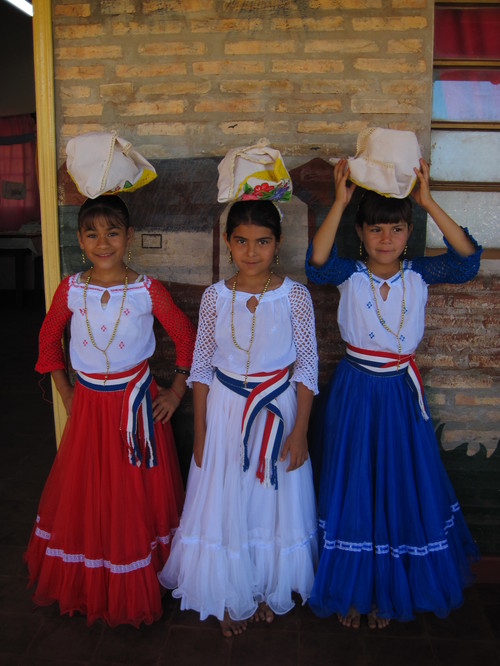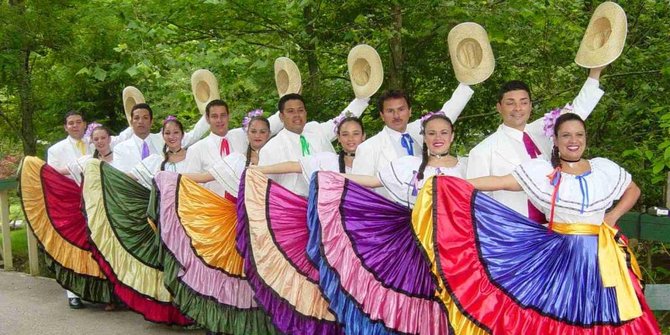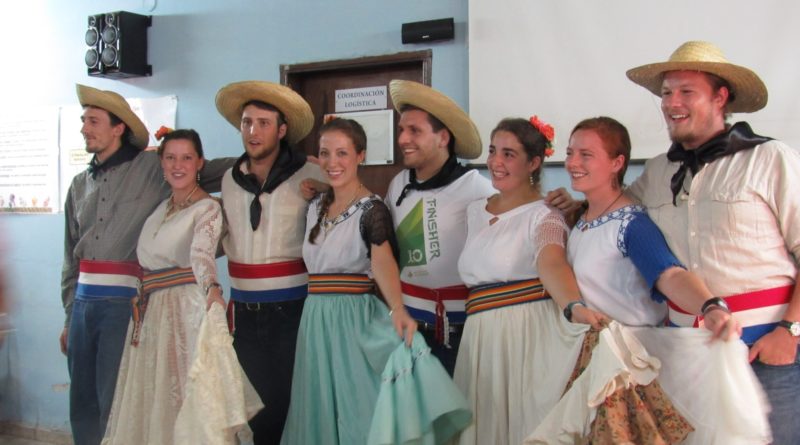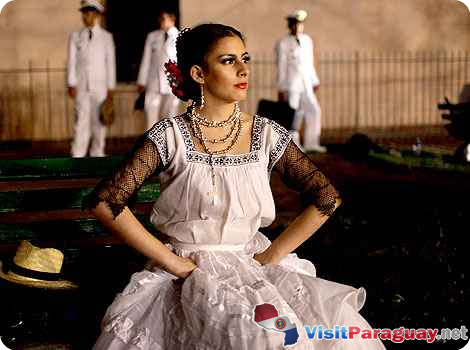Paraguay National Dress
People in Paraguay tend to wear clothing that is made from lightweight and breathable fabrics due to the hot climate. Light colors are also preferred to dark colors for the same reason; lighter colors generally keep people cooler in hot conditions.
The style of dress is fairly formal. Adults typically do not wear shorts and adult males generally do not wear open shoes, or sandals. Women usually wear skirts or dresses rather than pants or trousers. In a casual setting, sportswear is popular. This is due to it being loose fitting, lightweight, and comfortable.
A big part of the Paraguay culture is occupied by fine laces and embroidery. The lovely nanduti lace is known across the world. The name comes from the native words, in the Guarani language, for spider and fabric. The skill and craft is passed down through the generations. These can often be seen in the clothes that people wear.
In a business setting, the traditional formal shirt is acceptable. It is known as an a’o poi. It can be worn when attending a wedding, a business meeting, or other such formal occasion. Lighter colors are worn by men more than dark colors. At formal occasions women usually wear makeup and have their hair styled. High heeled shoes are common formal footwear for women. People from Paraguay usually take great pride in their appearance and their attire.
Dress is more conservative in the countryside and rural areas than in the big cities. In the large cities, many people have adopted Western standards of dress. You will likely see women wearing short dresses and skirts, with low necklines or sheer fabrics. As a foreigner, however, it is better to err on the side of conservatism and wear less revealing clothes. Clothing in Paraguay is similar to that in other South American countries, although people in Paraguay tend to favor louder and brighter colors.
The traditional costume of Paraguay includes a poncho, which is worn by both men and women. Women also wear a traditional shawl, which is called a rebozo.

A female’s skirt is usually made from nanduti. The a’o poi top also has nanduti lace detail, on the sleeves. When wearing the traditional Paraguay clothes women typically wear their hair in a bun or in a braid. They often have a flower and a decorative comb worn in the hair. The comb will often be gold. Jewelry features in the traditional outfit, with women wearing pretty earrings and a gold rosary.
The colourful clothes look very exotic and tropical, just like the country itself. The colours are blended to suit the taste of the designer; there are no set patterns or colour schemes that should be followed. Anything that looks good is acceptable.
A tupoy is worn when performing the traditional dancing from Paraguay. The folk ballet dancing in particular contains dancers wearing the tupoy. In times gone by, the traditional dress for those more wealthy people had lots of ruffles, embroidery, and lace. The vivacious and vibrant clothes showed off the personality of the wearer. They were also used to show status and money. Accessories included gloves and wide brimmed hats. The overall look could be quite ostentatious. People wanted to look elegant and portray a position of power and high social standing.
The traditional clothes in Paraguay have taken influences from the various cultural groups that have lived in the country. Within the indigenous population there are seventeen different ethnic groups. Other South American people, notably Brazilians, have moved to Paraguay and had an influence on the culture, including the clothing. There are also Spanish influences. This has led to a blend of different styles.
The Mennonites have retained most of their own cultural identity, which includes their styles of dress. This group are mainly found in the northern and western parts of the country.

Whilst people living in the countryside may wear more rustically styles clothes than those who live in the large cities and urban areas, traditional clothing is not often worn today in Paraguay. Rather, it may be worn for special occasions, for example weddings, festivals, heritage events, and other celebrations. The clothing in Paraguay has evolved over the years, so that visitors will probably not see many differences between the clothes worn in Paraguay on a day to day basis and those typically worn in their home country.
There are several museums across the country that contains wonderful exhibits of the national costumes and outfits worn by people in Paraguay in days gone by. These can be very interesting to see. There are also workshops showing traditional methods of making clothes, including the special nanduti lace.


